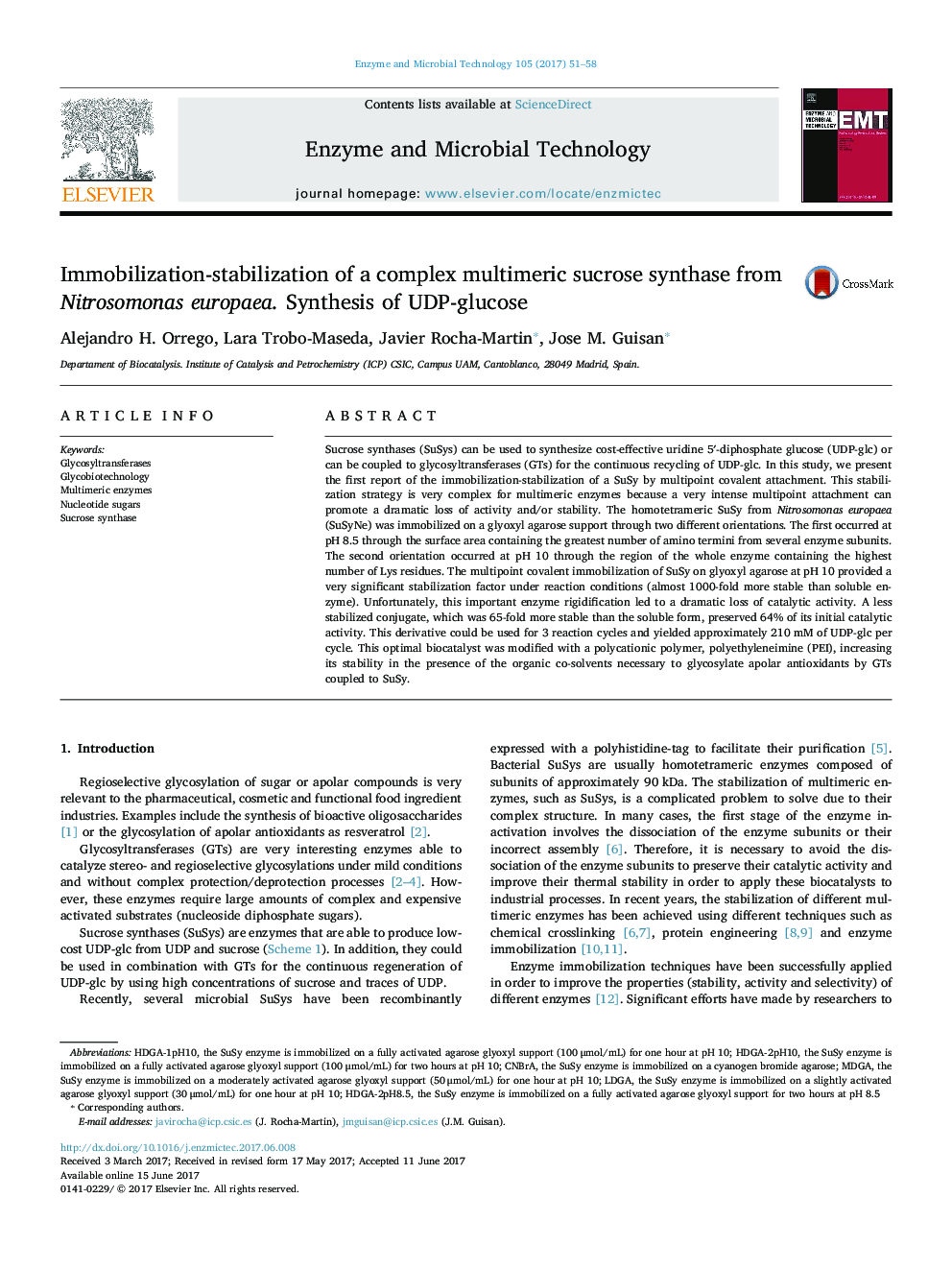| Article ID | Journal | Published Year | Pages | File Type |
|---|---|---|---|---|
| 4752735 | Enzyme and Microbial Technology | 2017 | 8 Pages |
â¢The complex sucrose synthase from Nitrosomonas europaea was immobilized on a tailor-made glyoxyl agarose support.â¢The control of the multipoint covalent attachment was crucial to obtain optimal biocatalysts (activity and stability).â¢The thermal stability of the immobilized enzyme was mainly dependent on its orientation on the support.â¢The optimal immobilized biocatalyst was able to catalyze the synthesis of 210 mM of UDP-glucose for 3 reaction cycles.
Sucrose synthases (SuSys) can be used to synthesize cost-effective uridine 5â²-diphosphate glucose (UDP-glc) or can be coupled to glycosyltransferases (GTs) for the continuous recycling of UDP-glc. In this study, we present the first report of the immobilization-stabilization of a SuSy by multipoint covalent attachment. This stabilization strategy is very complex for multimeric enzymes because a very intense multipoint attachment can promote a dramatic loss of activity and/or stability. The homotetrameric SuSy from Nitrosomonas europaea (SuSyNe) was immobilized on a glyoxyl agarose support through two different orientations. The first occurred at pH 8.5 through the surface area containing the greatest number of amino termini from several enzyme subunits. The second orientation occurred at pH 10 through the region of the whole enzyme containing the highest number of Lys residues. The multipoint covalent immobilization of SuSy on glyoxyl agarose at pH 10 provided a very significant stabilization factor under reaction conditions (almost 1000-fold more stable than soluble enzyme). Unfortunately, this important enzyme rigidification led to a dramatic loss of catalytic activity. A less stabilized conjugate, which was 65-fold more stable than the soluble form, preserved 64% of its initial catalytic activity. This derivative could be used for 3 reaction cycles and yielded approximately 210Â mM of UDP-glc per cycle. This optimal biocatalyst was modified with a polycationic polymer, polyethyleneimine (PEI), increasing its stability in the presence of the organic co-solvents necessary to glycosylate apolar antioxidants by GTs coupled to SuSy.
Graphical abstractDownload high-res image (191KB)Download full-size image
